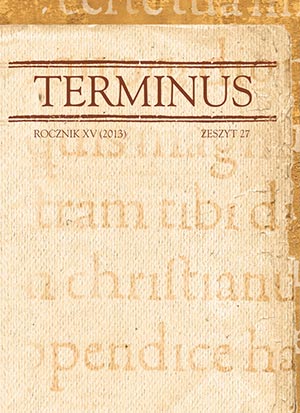Antonio Querenghi, Carmen ad Urbem Romam in adventu Serenissimi Vladislai Poloniae Principis (1625)
Antonio Querenghi, Carmen ad Urbem Romam in adventu Serenissimi Vladislai Poloniae Principis (1625)
Author(s): Grzegorz Franczak Subject(s): Literary Texts
Published by: Wydawnictwo Uniwersytetu Jagiellońskiego
Keywords: Antonio Querenghi; Vladislaus Vasa; panegyric; Neo-Latin poetry
Summary/Abstract: The subject of this edition is a forgotten 17th-century Polonicum: a Latin panegyric in hexameter by Antonio Querenghi entitled Ad urbem Romam in adventu Serenissimi Vladislai, Poloniae Principis (To the city of Rome on the occasion of the arrival of His Most Serene Highness Vladislaus, the Prince of Poland). The work, published in 1625 in Rome, was noted in bibliographies of S. Ciampi and K. Estreicher as anonymous. This is because the only copy known of the first edition until recently, preserved in the holdings of Biblioteca Ambrosiana in Milan, was deprived of the title page. The discovery of a second, complete copy in the collection of Biblioteca Casanatense in Rome allowed us to identify the author, namely the Padovan humanist Antonio Querenghi (1546-1633), who from 1605 served as the pope’s personal secretary (cubicularius), prelate and referendary of both signatures. The closest relation Querengi developed with Maffeo Barberini (Urban VIII), the “pope-Cicero” and patron of poets and artists, at whose side he stayed until his own death. On 19 January 1625 he graced with his panegyric the Roman visit of Prince Vladislaus Vasa, the later King of Poland and Grand Duke of Lithuania Vladislaus IV. The prince arrived in Rome on 20 December 1624, after an eight-month journey around Europe. Vladislaus, who tried to travel incognito, was received with all the honour due to the successor to the Swedish throne with the title of electi Magni Ducis Moschoviae (the elected Grand Duke of Muscovy). In the minds of the inhabitants of Europe, his person was also inextricably associated with the double triumph over the “schismatic” Muscovy, and above all with fending off Turks at the battle of Chocim (2 September–9 October 1621). Vladislaus spent the fortnight from 20 December 1624 to 2 January 1625 in the papal capital and took part in the celebration of the Jubilee. On 17 January he arrived there again after a short trip to Naples and left the city after only three days. Yet it was the latter short stay in Rome that the grandest reception in honour of the Polish Prince was held. On Sunday, 19 January, after a private audience with Pope Urban, at which only the closest curial dignitaries (with Querenghi probably among them) and officials from Vladislaus’ retinue were present, a sumptuous dinner was given with a concert afterwards. In the panegyric written for this occasion, Querenghi praises Vladislaus’ triumphs over “Muscovy twice defeated” (he meant armed attempts of the prince to the tsarist throne in the years 1610-1619) and over “the Thracian (i.e. Turkish) enemy”, the army of sultan Osman II. The ideological pivot of the poem is the pope’s planned general military expedition against Turkey: Urban VIII anoints the Polish Prince as the commander in chief of the upcoming crusade and a defender of Christianity.
Journal: TERMINUS
- Issue Year: 15/2013
- Issue No: 2 (27)
- Page Range: 295-305
- Page Count: 1
- Language: English

